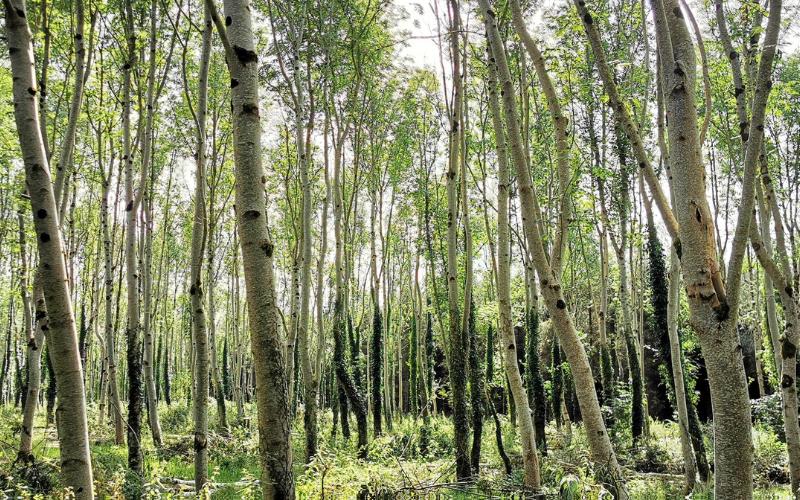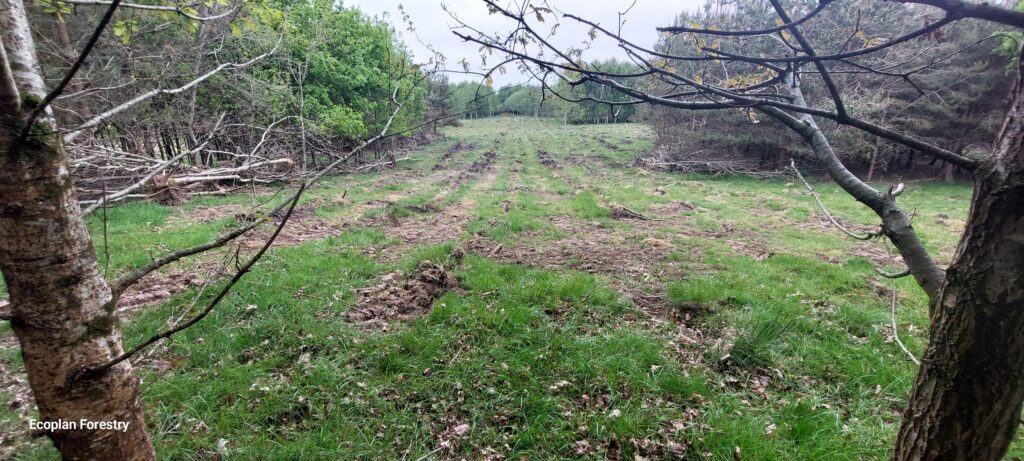
19 Jul Ash Dieback in Ireland
Ash Dieback in Ireland
What It Means for Your Forest – and What You Can Do About It
Introduction
Ash Dieback is one of the most destructive tree diseases ever seen in Europe. Caused by a fungal pathogen (Hymenoscyphus fraxineus), it was first confirmed in Ireland in 2012. Since then, it has quietly spread to almost every county.
But this isn’t just a disease problem — it’s a landscape, habitat and biodiversity problem. Entire stands of ash, especially in the Midlands and West, are dead or dying. Fields that once held tidy broadleaf plantations now show signs of decay, dangerous limbs, and lost potential. And the wildlife that once called these plantations home, everything from the small plants and insects to the larger badger, squirrels and Pine Martens, are losing their habitats as it gets replaced by grass and briar.
For landowners, it’s not just a loss of trees — it’s a financial blow, a management headache, and often a very personal disappointment.
Need Help with Ash Dieback?
If you’re unsure what to do with your ash trees, or whether your site qualifies, just get in touch. We’ll assess your options and handle the grant process for you.
No Cure, but There Is Support
There is currently no effective treatment for Ash Dieback. However, there is grant support to help you:
- Safely clear affected sites
- Replant with suitable alternative species
- Recover some of the financial value lost
The Department’s Reconstitution and Underplanting Scheme (RUS) — along with a new Climate Action Performance Payment (CAPP) — now offers significant aid to help landowners move forward.
What Are Your Options?
Depending on the age, height, and condition of your ash plantation, you may be eligible for:
- Reconstitution – full clearance and replanting of a new crop
- Underplanting – partial clearance and planting around retained ash
- Woodland Improvement Scheme (WIS) – for older or less viable sites
I can assess which option applies to you — and more importantly, which one makes the most sense for your land.
What Support Is Available? (2024)
These are the current support levels:
- Site Clearance Grant: €2,000/ha
- Replanting Grant (depending on species):
- Native Woodland (FT1): €6,744/ha
- Agroforestry (FT8): €8,555/ha
- Mixed conifer (FT12): €3,858/ha
- Premiums: Continue or are topped up (farmer & non-farmer options)
- Climate Action Performance Payment (CAPP): €5,000/ha (in 3 tax-free instalments)
You don’t need lab confirmation, and you don’t need to report the disease — assessment by a Registered Forester is now sufficient to access support.
How the Process Works
- Site assessment – I’ll visit and categorise your forest (Category 1, 2a, or 2b).
- Application submission – I’ll handle all Form 1 paperwork, maps, and planning.
- Clearance and replanting – We arrange the works and manage contractors if needed.
- Grant claims – We apply for your instalments and track your CAPP eligibility.
- Ongoing support – You get a healthier forest and a long-term plan.
What I’m Seeing on the Ground
In many areas, the damage is now widespread and irreversible, and for seemingly healthy stands it’s now only a matter of time. Some landowners are understandably hesitant to start again, especially those who planted ash in good faith under earlier grant schemes. But the truth is, waiting won’t stop the disease — and the longer you delay, the more value is lost.
I’ve worked with dozens of landowners now facing this reality. My goal is to help them move on — with honest advice, efficient planning, and better outcomes next time around.
Let’s Talk
If you think your forest may be affected, or you just want to understand your options, feel free to get in touch (whichever part of the country you’re in).
Ecoplan Forestry specialise in the management and control of ash dieback, and the associated ash dieback grants, while implementing the principles of Ecoforestry.
Ecoplan offers a complete service — from Forest Establishment and Harvesting to Wildlife and Habitat Management and Native Woodland Conservation. Our holistic approach ensures your forest is both productive and ecologically resilient.
For more information Contact Ecoplan Forestry
You can learn more about Ash Dieback Disease research from the UK Forestry Commission Here

Sean McGinnis Ecoplan Forestry

